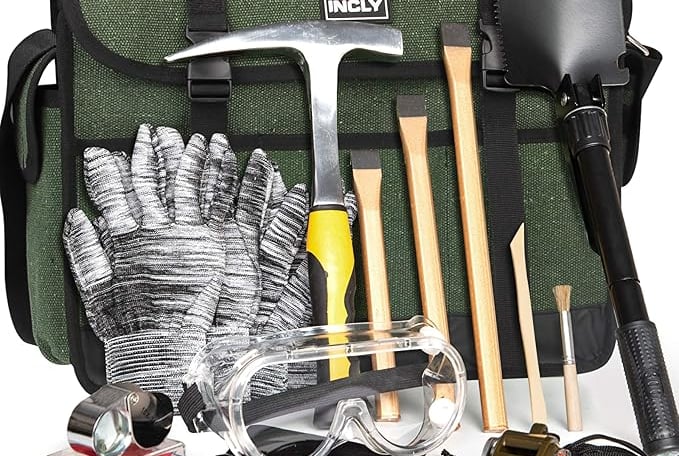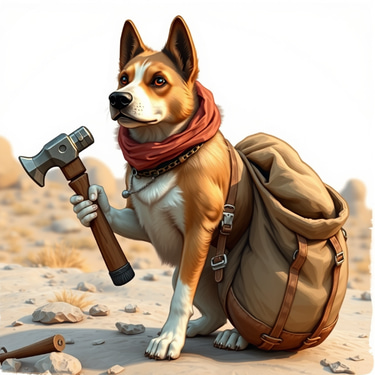Essential Tools Every Rockhound Needs
The Basic Rockhound’s Toolkit
Larry Foss and AI
8/20/20252 min read


Essential Tools Every Rockhound Needs
Rockhounding is a rewarding hobby, but like any adventure, the right tools can make all the difference. Whether you’re combing a riverbank for agates, chipping quartz from a hillside, or carefully digging for fossils, having the proper equipment ensures your trips are safe, efficient, and enjoyable. If you’re just starting out, don’t worry—you don’t need to buy everything at once. This guide will help you understand what tools are truly essential and which ones you might add as your collection grows.
The Basic Rockhound’s Toolkit
1. Rock Hammer (Geologist’s Hammer)
The most iconic tool for rockhounds. One side has a flat head for breaking rocks, while the pointed end is perfect for prying. A good rock hammer is strong enough to break hard rock but balanced enough to carry all day.
2. Chisels
Chisels are great for splitting rocks and extracting specimens without damaging them. They come in different sizes, and it’s smart to carry a few. Always use them with safety goggles.
3. Safety Gear
Rockhounding can be dangerous without protection. Always pack:
Safety goggles (to protect against flying chips)
Heavy gloves (for handling sharp rocks)
A sturdy hat (especially if working near cliffs or overhangs)
4. Buckets and Bags
You’ll need something to carry your finds. Buckets, canvas bags, or even sturdy backpacks work well. Wrap delicate specimens in newspaper or bubble wrap.
5. Sturdy Boots and Clothing
Good footwear protects your feet from sharp rocks, uneven ground, and even snakes. Long sleeves and pants keep you safe from sun, thorns, and bugs.
Helpful Extras for the Field
1. Shovel and Trowel
For digging in dirt or sand. A folding shovel is lightweight and easy to pack.
2. Screens and Classifiers
Useful for sifting through sand or gravel to find small gems or fossils.
3. Magnifying Glass or Hand Lens
A 10x loupe helps you spot details like crystal structures, fossils, or mineral patterns.
4. Field Guide or Rock Identification Book
There’s nothing more exciting than identifying your finds on the spot. Many pocket-sized guides are available.
5. GPS, Map, and Compass
Cell phones don’t always work in remote areas. Old-fashioned navigation tools can be a lifesaver.
Advanced Rockhounding Tools
Once you’ve fallen in love with the hobby, you may want to invest in more specialized tools:
UV Flashlight: Helps identify minerals that glow under ultraviolet light, such as fluorite or calcite.
Metal Detector: Useful for finding gold nuggets or metallic specimens.
Lapidary Equipment: If you plan to cut, shape, and polish your stones at home, you’ll need saws, grinders, and tumblers.
Tips for Packing Your Gear
Don’t overload yourself—carry only what you’ll need for the trip.
Always bring plenty of water, snacks, and a first-aid kit.
Use labels or small bags to keep track of where you found each specimen.
Keep safety first—your gear is replaceable, but you are not.
Ready to Rock?
With the right tools in hand, rockhounding becomes more than just a walk outdoors—it’s an adventure of discovery. Even a simple hammer and bag can lead to priceless finds and lifelong memories. Start with the basics, expand as you go, and soon your toolkit will feel like an extension of your curiosity.
So grab your hammer, lace up your boots, and see what treasures are waiting for you in the rocks beneath your feet!
